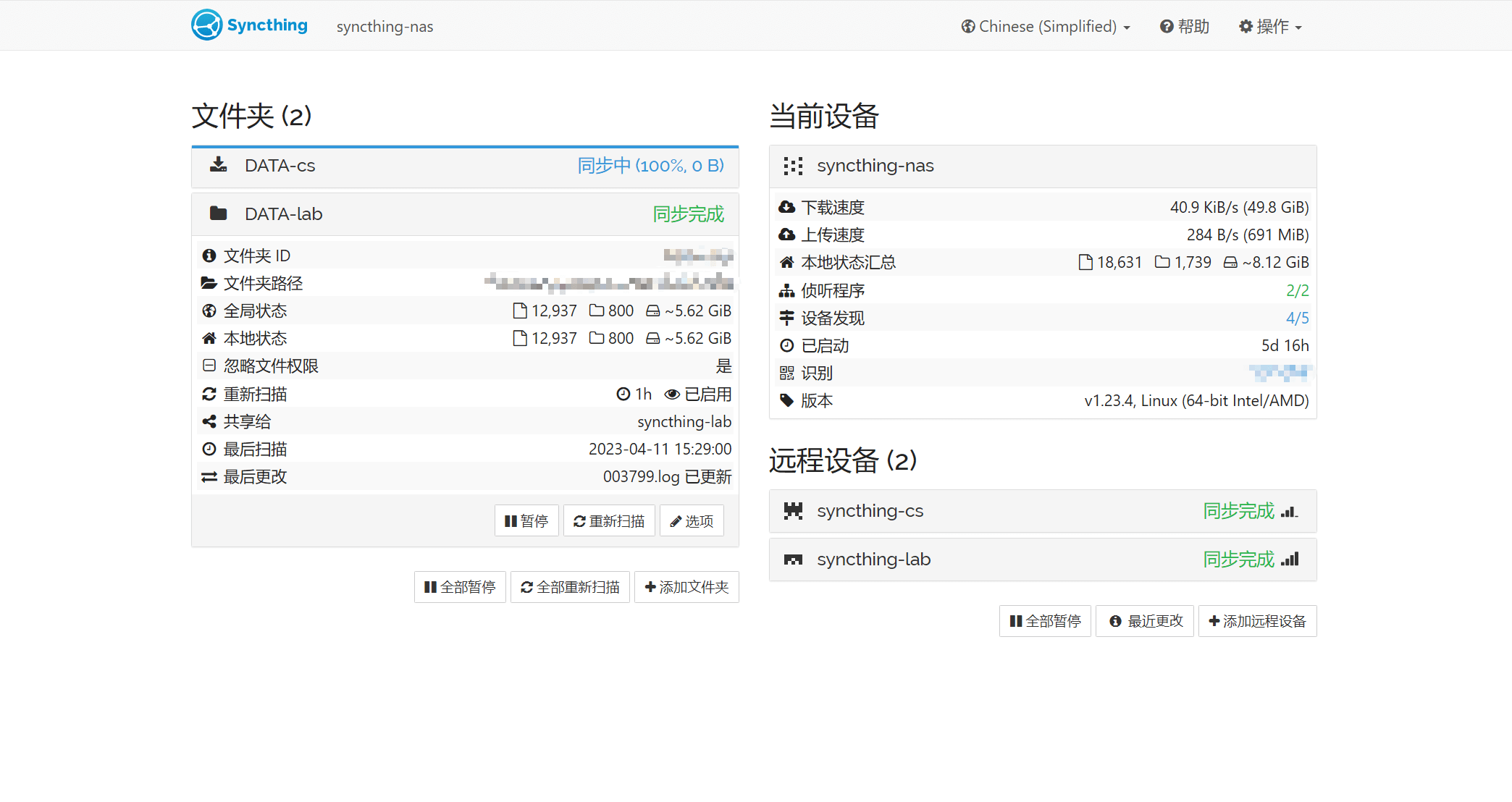Homelab - Cross-Device Synchronization Tool: Syncthing

Syncthing is a free and open-source file synchronization application that allows you to sync files and folders across multiple devices while supporting incremental synchronization. I use it to back up data from my server to a NAS for centralized management.
Deployment (Docker Compose)
To begin, create a compose.yaml file and paste the following content:
version: "3"
services:
syncthing:
container_name: ${STACK_NAME}_app
image: syncthing/syncthing:${APP_VERSION}
hostname: my-syncthing
environment: # It needs to run as root, or it won't be able to access other Docker directories or the host machine's root directory.
- PUID=0
- PGID=0
volumes:
- ${APP_SYNC_DIR}:/DATA
- ${STACK_DIR}/config:/var/syncthing/config/
ports:
- ${APP_PORT}:8384 # Web UI
- 22000:22000/tcp # TCP file transfers
- 22000:22000/udp # QUIC file transfers
- 21027:21027/udp # Receive local discovery broadcasts
restart: unless-stopped
(Optional) It's recommended to create a .env file at the same level as compose.yaml and customize your environment variables. If you prefer not to use environment variables, you can directly customize your parameters within compose.yaml (e.g., replace ${STACK_NAME} with syncthing).
STACK_NAME=syncthing
STACK_DIR=xxx # Customize your project storage path, e.g., ./syncthing
# syncthing
APP_VERSION=latest
APP_PORT=xxxx # Customize your access port, choose one that is not already in use
APP_SYNC_DIR=xxxx # Customize the path you want to sync, e.g., /DATA
Finally, in the same directory as compose.yaml, execute the docker compose up -d command to start the orchestrated container.
Configuration Notes
If you encounter permission issues, try changing the PUID and PGID values to 0 to run it with root privileges.
References and Acknowledgments
[Replace with Reference 1]
[Replace with Reference 2]
This post is translated using ChatGPT, please feedback if any omissions.